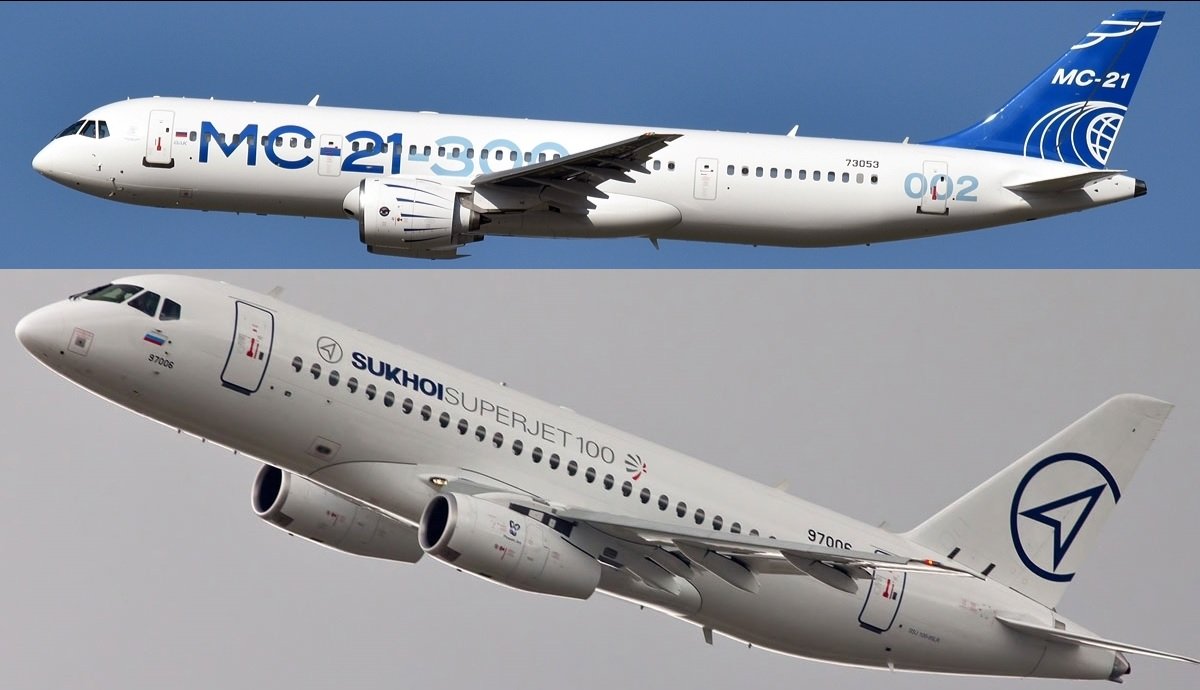Russian Aviation Industry's Leap Forward: MC-21 and Sukhoi Superjet 100 in the Spotlight
0 comments
Russian Aviation Industry's Leap Forward: MC-21 and Sukhoi Superjet 100 in the Spotlight
Introduction:

The geopolitical landscape has significantly altered the course of many industries worldwide, and the aviation sector in Russia is no exception. With the imposition of sanctions following Russia's actions in Ukraine, there's been a strategic pivot towards self-sufficiency in aircraft manufacturing. This post delves into how Yakovlev, a major Russian jet manufacturer, has responded by scaling up the production of the MC-21 and Sukhoi Superjet 100, aiming to replace Western-made aircraft like Boeing and Airbus with home-grown technology.
The Impact of Sanctions:
Background: The sanctions placed on Russia have restricted access to Western technology and parts, which were crucial for Russian aircraft production. This led to significant challenges but also catalyzed innovation within Russia's aerospace sector.
Sanctions as a Catalyst: Instead of crippling the industry, these sanctions have been viewed by some as a blessing in disguise, pushing Russia to expedite its import substitution program. This has particularly influenced the development and production of the MC-21 and Sukhoi Superjet 100, which were initially designed with a significant reliance on foreign components.
Yakovlev's Response:
- MC-21 Development:
- Design and Build: The MC-21, designed as a competitor to the Airbus A320neo and Boeing 737 MAX, features a carbon fiber reinforced polymer wing and was initially planned with foreign engines. However, due to sanctions, there's been a shift towards the Russian-made PD-14 engines, showcasing a move towards technological autonomy.

Production Surge: Yakovlev has committed to increasing production rates, with plans for the debut flights of MC-21 aircraft equipped with domestic engines slated for 2025. This move is part of a broader strategy to meet domestic demand and eventually target international markets.
Sukhoi Superjet 100 (SJ-100):
_over_Italy.jpg)
Redesign Efforts: The SJ-100, originally with a mix of Russian and Western parts, is undergoing a 'Russification' process. This includes equipping the aircraft with the Aviadvigatel PD-8 engines, aiming for a complete overhaul to use domestic components by necessity and design.
Production and Certification: Production has seen delays due to these changes, but the first test flight of an SJ-100 with local components was conducted in 2023, signaling progress despite setbacks. Certification flights with the PD-8 engines are planned for next year, indicating a step closer to operational deployment.
Challenges and Opportunities:
Technical Hurdles: The transition to entirely domestic production has brought about challenges in terms of quality control, certification, and meeting the performance standards of their Western counterparts.
Market Dynamics: While domestic airlines have shown interest, the international market remains uncertain due to the geopolitical climate and the aircraft's certification status in Europe and other regions.
Economic Implications: The move towards self-sufficiency could reduce long-term costs and dependency on foreign technology, potentially making Russian aircraft more competitive in price if they can overcome initial hurdles.
Conclusion:
The sanctions have inadvertently spurred a renaissance in Russian aviation, with Yakovlev's MC-21 and Sukhoi Superjet 100 projects at the forefront of this transformation. As Russia pushes for aircraft independence, the world watches closely to see if these planes can not only meet domestic needs but also compete on the global stage. This shift might redefine Russia's role in the international aviation market, proving that necessity indeed spurs innovation.
Tags: #Russia #Aviation #Aerospace #Yakovlev #MC21 #SukhoiSuperjet100 #Sanctions #Innovation #SelfSufficiency #AircraftIndustry
Comments